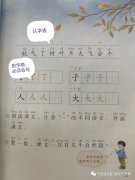杭州教师小学英语说课稿
四年级上册(听说课)unit 3 How many?
Greeting:
Good morning, honorable judges! I’ m No. X. It’s my pleasure to stand here to interpret my teaching design. My topic is “Unit 3 How many? ”. I will talk about my lesson from the parts as followed: the analysis of the material, teaching aims, key points and difficult points, teaching procedures and so on.
1 Analysis of teaching materials
Now let’s come to the first part--the analysis of teaching material. The content is from Part “Cartoon time “of Unit 3 How many? Grade 4, Oxford Yilin Primary School English. The main topic is about the numbers. It’s the listening and speaking lesson. After learning this lesson, students will be able to know how to ask and answer the number. Therefore, this lesson plays an important role in their study.
2 Analysis of students
Next is the second part--the analysis of students. The students in this period have learnt some basic English skills such as listening and speaking, but not very well. In addition, they are full of curiosity and very active . So I will give them lots of opportunities to practice in the class.
3 Analysis of teaching aims
According to the new Curriculum Standard in English, I set the teaching aims as follows:
Firstly, knowledge aim: Students can read and write the sentence patterns “--How many balls do you have? --I have twelve balls”.
Secondly, ability aims: Students can use the new sentences to communicate with others and talk about the number in their daily life. Students will express their opinions on whether they can do something or not.
Lastly, emotional aims: Students would like to take part in the activities and cooperate with their classmates in the class. Students will develop their different kinds of habits.
4 Analysis of teaching key point and difficult points
Then, I want to put forward the key point and the difficult points of this lesson.
Key point:
Students can get familiar with the sentence patterns “--How many balls do you have? --I have twelve balls”.
Difficult Points:
Students can describe the number of things they have and whether they can do something. Students can develop the cooperation spirit and be active during the lesson.
5 Analysis of teaching methods and learning methods
Now I want to talk about the teaching methods. Communicative Approach, Tasked-based Teaching Method and TPR Teaching Method will be adopted in this lesson to active my students. For students, they will use independent learning method. They will learn to cooperate with others, and become the center of the class.
6 Analysis of teaching aids
To help students learn much easier and better. I will mainly use multi-media, pictures and tape recorder as teaching aids.
7 Analysis of teaching procedures
After the above analysis, I want to explain the main part in my teaching design, the analysis of teaching procedures. I will talk about it from the following parts: lead-in, pre-listening, while-listening, post-listening, summary and homework.
Step 1 Lead-in
The first step is Lead-in. After daily greeting, I will let students sing an English song “Ten Little Indian Boys”. Then ask students to guess the topic of the song and how many numbers they can hear in the song. In this way, I will lead the topic of this lesson and help students review the words about numbers. Also, the song can arouse students interest in this lesson, which is beneficial to start the next stage.
Step 2 Pre-listening
Before listening I will show some pictures of different toys on the PPTs, such as cars, dolls and so on. Ask students “Do you have any...?” Then I will present the pictures of different fruits on the blackboard to guide students to calculate by asking and answering “--How many ...do you have?--I have....” and write down the sentences. Let some students come to the front to show their answers. Then read them together twice.
By doing this, it can help students review the words and learn the new sentences to lay a foundation for the following steps.
Step 3 While-listening
After preparation, lets move to the next step while-listening. I will let students listen to the tape twice:
1. Extensive listening
For the first time, I will guide students to listen to circle the words they have learned. Then find the main topic. During these tasks, students listening skills can be trained. Through the extensive listening, students can know the basic information of the dialogue.
2. Intensive listening
For the second time, I will ask students to fill in the following blanks with their partners:
--How _____ _____do you have?
--I have _______ balls.
--Can you play __________?
-- ____ , but I can do this.
The practice can help students understand the detailed information of this dialogue and pay attention to the pronunciation as well.
Step 4 Post-listening
Next, its the fourth step, post-listening. In this process, there are variety of practice activities. Pair work: let students make a new dialogue according to the pictures on the PPTs. Group work: Do a survey about “How many...do you have?” in group of 5 and then finish the table. These activities can achieve the emotional aims to increase their cooperation spirit. Moreover, they can practice the words and sentences in daily communication, which can improve their listening and speaking skills.
Step 5 Summary and homework
After all the activities, I will invite some students to share what we have learned today and ask one student to act as the little teacher to summarize. In this way, it can help students to consolidate the knowledge they have learned in this class.
After class, I will ask students to count the numbers 1-15 after class and read the dialogue to their parents. In addition, make a poster about numbers and invite some volunteers to share their work in the next class. It is a good way to help students develop the habit of reviewing and cultivate their creative thinking.
8 Blackboard design
The main knowledge is demonstrated on the blackboard. It is clear and the pictures will attract students.
本文相关词条概念解析:
说课稿
“说课”是教学改革中涌现出来的新生事物,是进行教学研究、教学交流和教学探讨的一种新的教学研究形式,也是集体备课的进一步发展,而【说课稿】则是为进行说课准备的文稿,它不同于教案,教案只说“怎样教”,说课稿则重点说清“为什么要这样教”。“说课”有利于提高教师理论素养和驾驭教材的能力,也有利于提高教师的语言表达能力,因而受到广大教师的重视,登上了教育研究的大雅之堂。要说好课,就必须写好说课稿。认真拟定说课稿,是说课取得成功的前提,是教师提高业务素质的有效途径。




